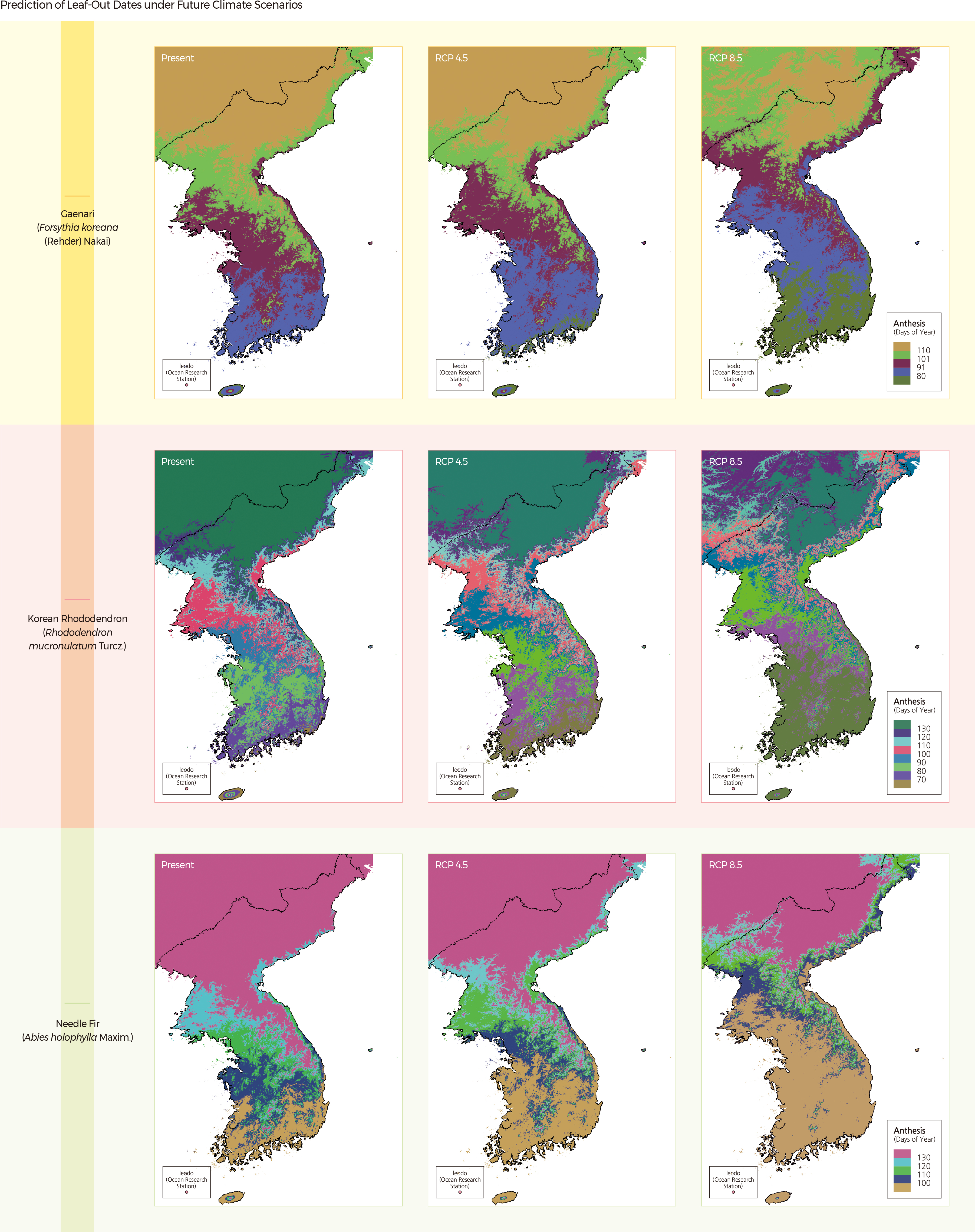English II 2020
According to the IPCC 4th Assessment Report, the global average temperature has risen by 0.76˚C over the past century, and the average temperature in the 2100s is expected to rise 1.1–6.4˚C from the 2000s. As the temperature increases, the vegetation zone of the Northern Hemisphere is moving from the south to the north and from lowlands to highlands. An increase by 1˚C is expected to cause a migration of mid-latitude plants by 150 km to the north and 150 m higher in altitude, making it difficult for most plant species to keep up with the speed of climate change. Thus, the chance of extinction or shrinkage of habitat for plants increases. Detection of changes is possible by observing the microclimate, seasonal variations, and physiological changes of plants' blooming and bearing fruit through long-term monitoring.
Since 2009, the Korea National Arboretum has been carrying forward an adaptation plan for forest plant species susceptible to climate change. The plan designates 100 climate change vulnerable species and monitors them after classifying them into either northern or southern species. Plant species will physiologically be influenced by climate change. Habitat change and distribution area change are predicted as consequences of interspecific competition. Thus, new endangered plant species are likely to appear because of global warming.
The winter bud burst season and leaf unfolding season of Rigid-branch Yew and Korean Fir are expected to start earlier. Highland plants such as Korean Fir, Dark-bark Spruce, Korean Crowberry, Rigid-branch Yew, Khingan Fir, and Korean Arborvitae are expected to decrease in population. Conservation of northern plants living in isolated environments such as alpine, sub-alpine, islands, and wind holes is becoming an important issue. |


